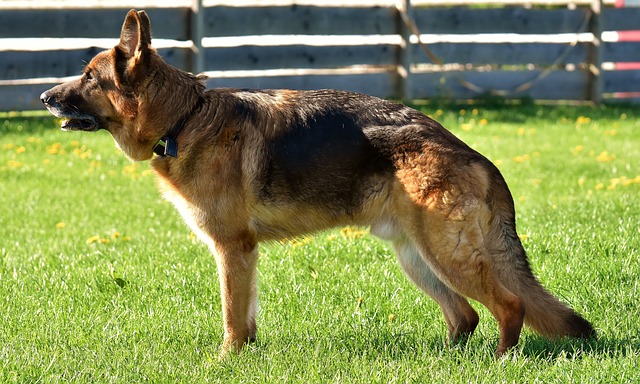The hardest part about having furry friends is that they don’t live nearly long enough. The average lifespan of a small dog is 10-15 years, while medium dogs live an average of 10-13 years and large breeds only live an average of 8-12 years. Giant breeds have the shortest average lifespan at only 8-10 years.
Luckily, there are lots of things you can do to help your dog live as many years as possible. Here are 12 tips for increasing your dog’s chances of living a longer, healthier, and happier life.

#1 – Give them plenty of exercise
You’ve probably been hearing how important exercise is for your entire life. The same thing goes for your pup. Not only is exercise crucial for your dog’s physical health, but it’s important for their mental health, as well. Regular exercise can help reduce stress, boredom, and anxiety. As you can imagine, dogs that frequently suffer from stress and boredom are not very happy and often struggle with behavioral problems.
Chronic stress in dogs speeds up the aging process, delays wound healing, contributes to depression and anxiety, decreases cognitive function, and increases the risk of illness from bacteria or viruses. Dogs who suffer from chronic stress are often afflicted with immune problems like allergies or gastrointestinal problems.
So, giving your dog plenty of daily exercise is critical for maintaining their health and happiness, which in turn can affect how long they live.

#2 – Feed them the best you can
Both the quantity and quality of the food you feed your dog affect their health. One study showed that dogs who received 25% fewer calories than what was considered “normal” for their size lived an average of 2 years longer than those who ate a “normal” amount of food.
Studies are starting to show the negative side effects of traditional kibble. In one study, dogs who were fed raw diets aged slower and suffered from fewer health problems than dogs that were fed kibble. In another, dogs that were fed a homemade diet of high-quality ingredients lived nearly 3 years longer than dogs fed kibble!

If a raw or home-cooked diet isn’t feasible for your lifestyle, consider a fresh dog food brand like Ollie. Ollie ships balanced dog food right to your door, so you won’t need to waste time formulating or cooking your own recipes. The personalized meals include healthy ingredients you can see, including meat and vegetables. Curious to try Ollie? Click here to get 60% off your first order!
#3 – Keep them at a healthy weight
Nearly half of all dogs in the United States are overweight, and more than a quarter are obese. Extra weight adds pressure to your dog’s joints, which can cause or exacerbate problems such as arthritis and hip dysplasia.
Obese dogs have a harder time handling heat and exercise. Obesity can also lead to an increased risk of torn ligaments, back problems, heart problems, trouble breathing, and skin problems. These are all things that can substantially reduce your dog’s lifespan and quality of life.
You may think that giving your dog treats is a way to show your dog how much you love them, but giving them too many treats or failing to reduce their regular food intake to account for those calories is actually hurting them. Try switching out your dog’s regular treats for fruits and vegetables that are safe for dogs so that you can reward your dog without negatively affecting its quality of life.
When filling out a questionnaire for Ollie Dog Food, you’ll have the option to set your dog’s “ideal” weight. Then, Ollie will give you personalized feeding instructions to ensure your dog gets the ideal amount of calories to help them lose weight. Find out how Ollie Dog Food can help your dog lose weight!

#4 – Brush their teeth daily
You probably brush your teeth at least once a day. Yet, many dog parents don’t realize that their dogs benefit from daily teeth brushing too. Sure, it helps if your dog likes to chew, but you shouldn’t rely on chewing alone to clean your dog’s teeth and stimulate its gums. After all, dental problems affect more than just your dog’s mouth.
Neglecting your dog’s teeth can lead to a long list of other health problems, including increased inflammation throughout the body, increased risk of heart disease, and worsening symptoms of diabetes.
A soft dog toothbrush with toothpaste designed for dogs (coconut oil works, too!) used at least once a day is best. If your dog absolutely refuses to let you brush their teeth, you can try other products like dental chews. Anything helps when it comes to keeping your dog’s teeth – and overall health – in good shape.

#5 – Keep their mind active
A bored dog is an unhappy dog. Boredom can lead to depression, anxiety, and even illness. Try teaching your dog new tricks, signing up for an agility class, or leaving puzzle toys for your pooch to figure out when you aren’t home. Keeping their mind busy can help prevent cognitive decline.
#6 – Go to the vet regularly
Your dog should go to the vet at least once a year to keep track of their health and give your vet a chance to spot any problems before they become serious. Older dogs should go for checkups twice a year since they’re at a higher risk of health concerns.
Once your vet has established a baseline of your dog’s condition when they’re healthy, it will be easier to notice if something changes. Many health issues that dogs are prone to are treatable if caught early. Yet, those issues can be very serious if they aren’t caught until your dog is having severe symptoms.

#7 – Train them well
It’s critical that your dog has a good recall. Your dog being well-trained enough to come every time you call could prevent them from dashing into the street and getting hit by a car. You should practice training commands with your dog throughout their whole life to ensure your dog knows them well enough to listen in an emergency.
#8 – Spay or neuter
According to the American Society for the Prevention of Cruelty to Animals (ASPCA):
“Spaying helps prevent uterine infections and breast tumors, which are malignant or cancerous in about 50 percent of dogs…Neutering your male companion prevents testicular cancer and some prostate problems.”
Intact dogs are also more likely to run away from home in search of a mate, which increases the risk of your dog being hit by a car or meeting a similar terrible fate.

#9 – Give your dog an active social life
Dogs are social creatures, and they’re usually much happier if they get to meet plenty of other people and dogs. If your dog is friendly, trips to the dog park to play with other dogs can increase their happiness. If your dog prefers people, consider taking them to stores and restaurants that are dog-friendly so they can interact with people.
#10 – Make sure they have a thick, soft bed
Many dogs wind up being euthanized due to pain problems such as arthritis and hip dysplasia that are no longer well-managed. Giving your dog a thick bed to sleep on rather than directly on the floor can cushion their joints and help prevent, or at least minimize, painful joint problems as they age.

#11 – Avoid too many antibiotics
Antibiotics have their place in both human and canine medicine. Unfortunately, rampant misuse is causing a wide variety of antibiotic-resistant bacteria. Overuse of antibiotics can also lead to problems such as autoimmune diseases, chronic ear infections, and even cancer. Avoid giving your dog antibiotics unless your vet thinks it’s necessary.
#12 – Love them
Not only do dogs thrive on love from their people, but you know you have limited time with them on Earth. Every minute you can spend loving on them is another minute your dog is happy. Plus, you’re creating memories that will last long after your dog has crossed the Rainbow Bridge.
By following the 12 tips in this article, you can give your dog the best life possible. One of the biggest impacts on your dog’s health is their diet. Make sure you give them healthy food that they also enjoy, such as Ollie’s Fresh Dog Food. Ollie offers personalized fresh food that’s shipped right to your door, so your dog can stay in shape while eating like royalty. Get 60% off your first box today!



 Toledo, United States.
Toledo, United States.